Download Activities: English | Spanish | Vietnamese
Listen to Me Talk!
NEW
(Birth to 3 Months)
Talk to your baby about what you see and do.
Example:
- I see a dog. The dog is black. The dog says ‘woof-woof!’
This is called self-talk—when you describe what you’re doing, seeing, or hearing.
Self-talk helps your baby learn about the world.
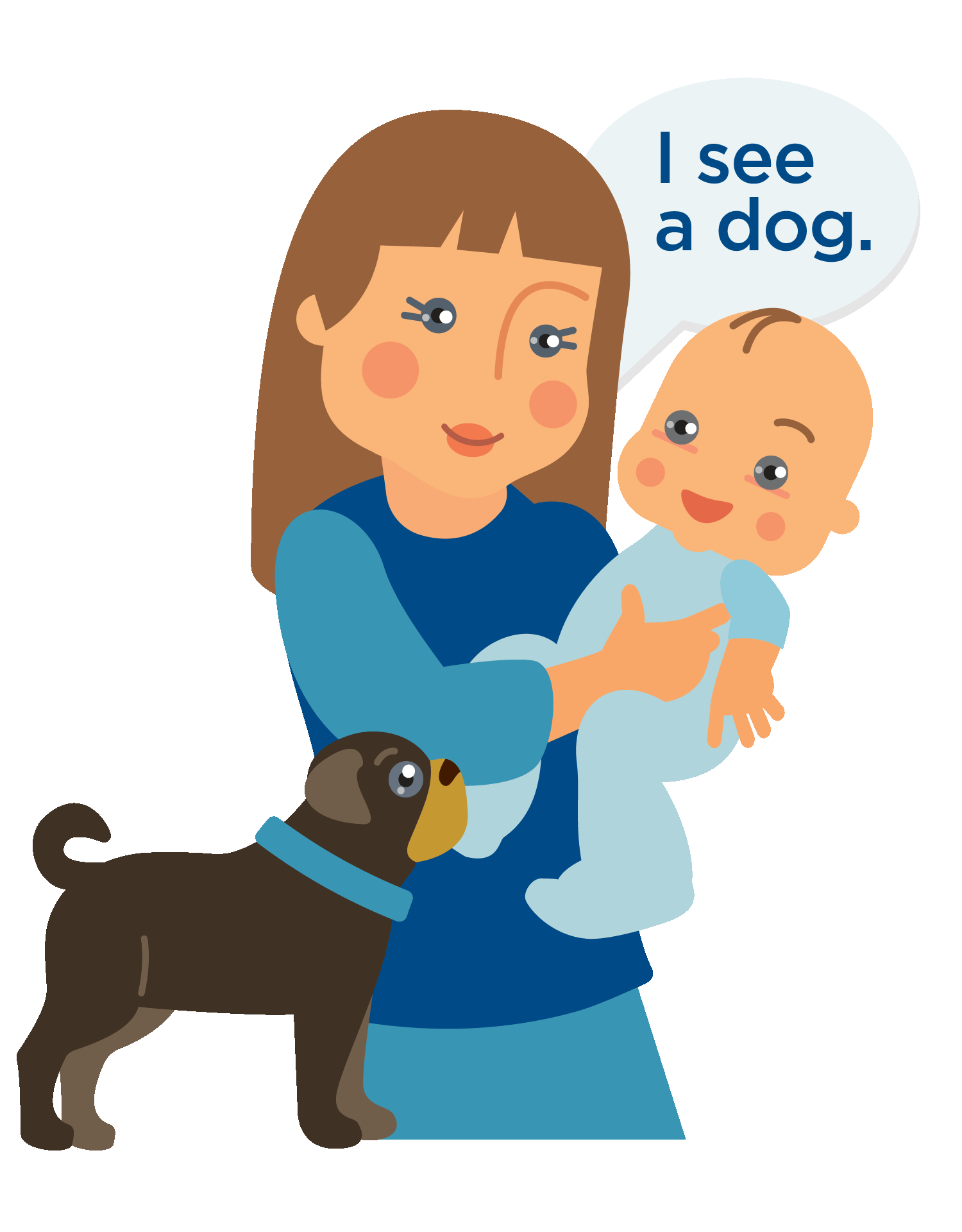
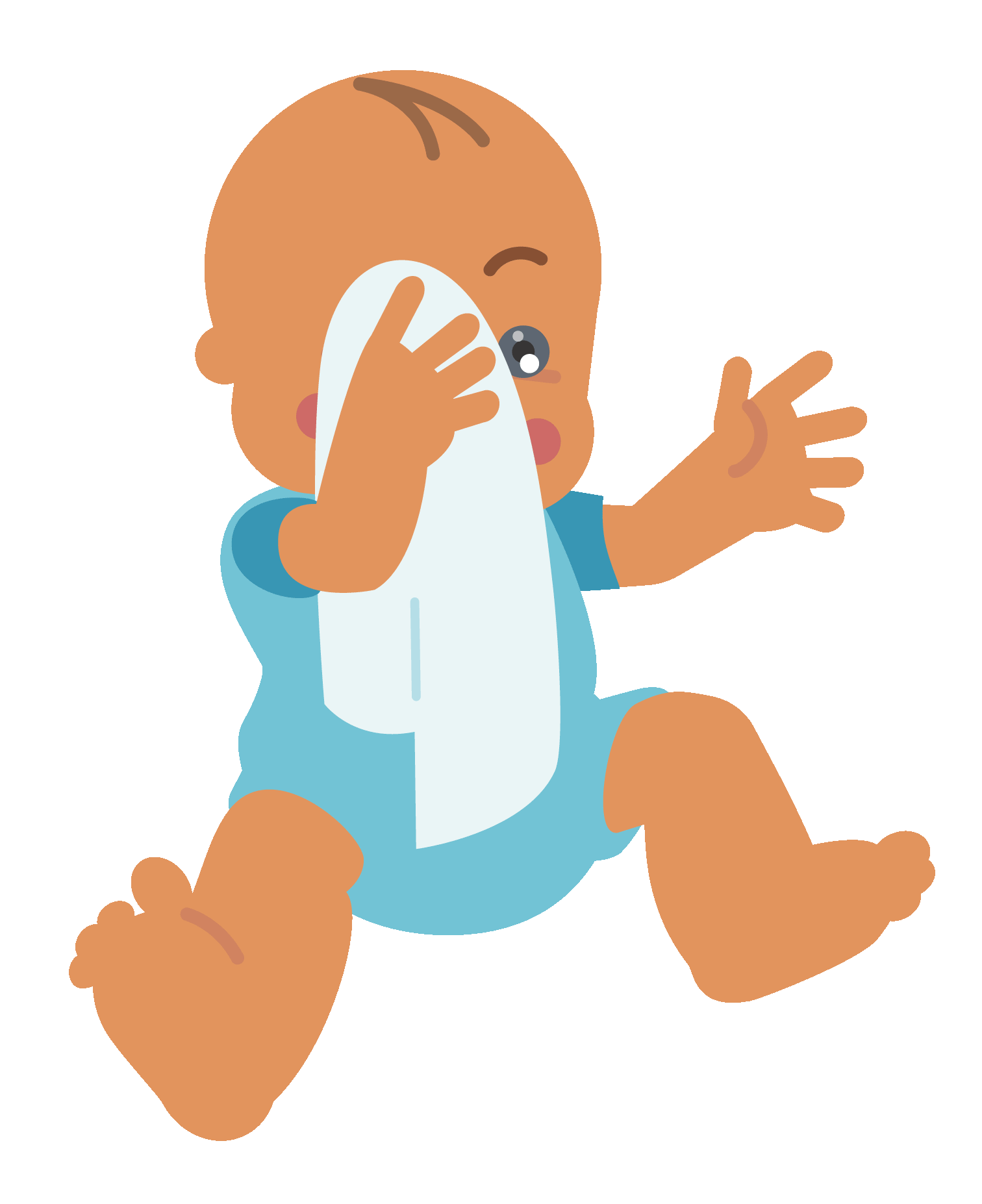
Giggles Galore!
NEW
(4 to 6 Months)
Play a game of peek-a-boo!
Cover your face with your hands or a cloth and say,
- Where’s Mommy/Daddy?
Uncover your face with a big smile and say,
- Peek-a-boo!
Do this a few times, pausing to see if your baby giggles or reacts happily.
Make silly faces or fun sounds to keep your baby interested.
Playing peek-a-boo helps your baby learn how actions cause reactions while making them laugh!
Sing My Name!
NEW
(4 to 6 Months)
Say your baby’s name often in a fun and loving way.
- You look so happy, Silvia! or Are you ticklish, Silvia?
Use their name with words or actions that grab their attention.
- Silvia, look at my silly face!
Celebrate any response, like when they look at you or smile. When they do, say,
- Hooray, Silvia!
Saying your baby’s name often helps them learn it.
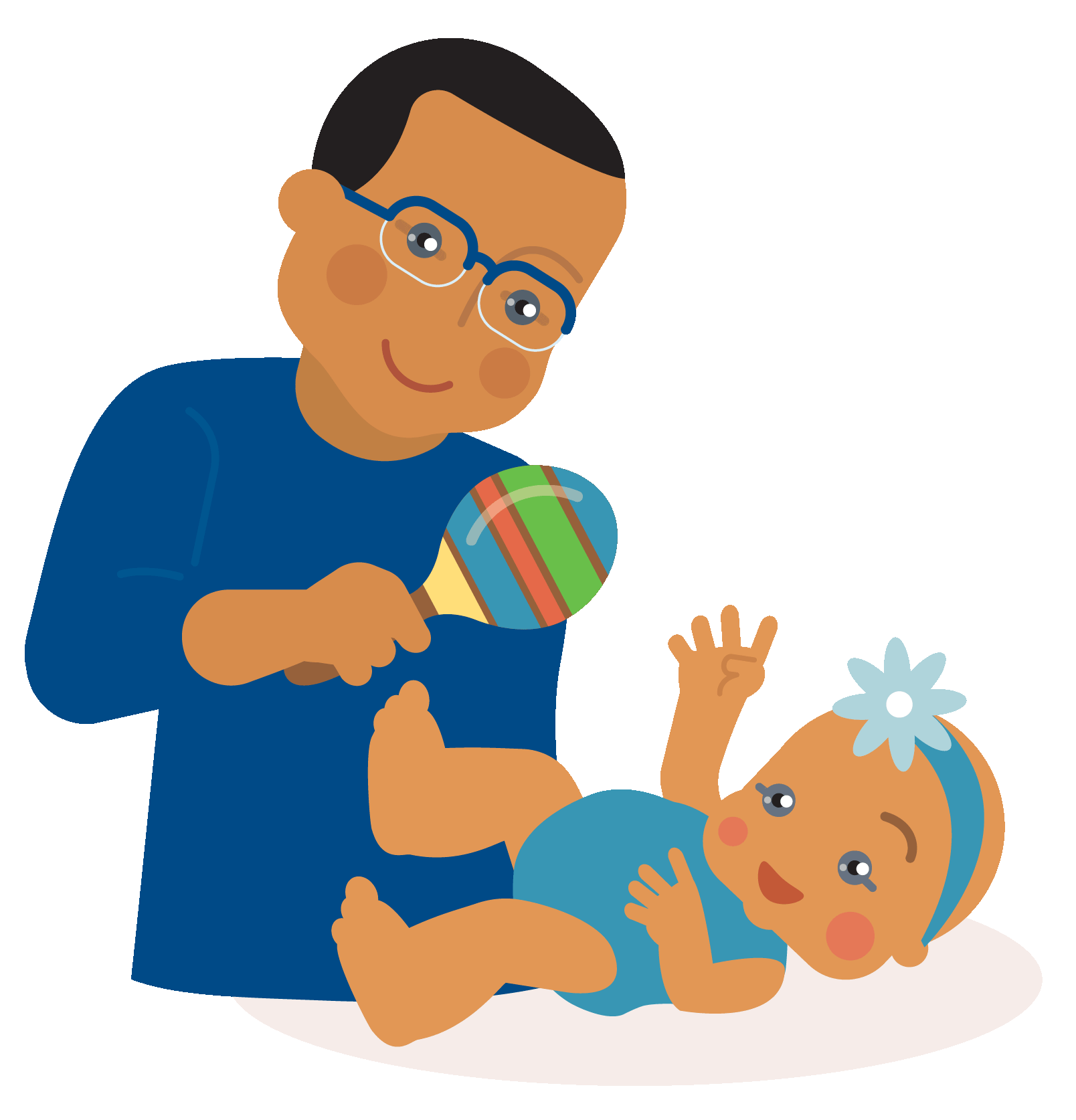
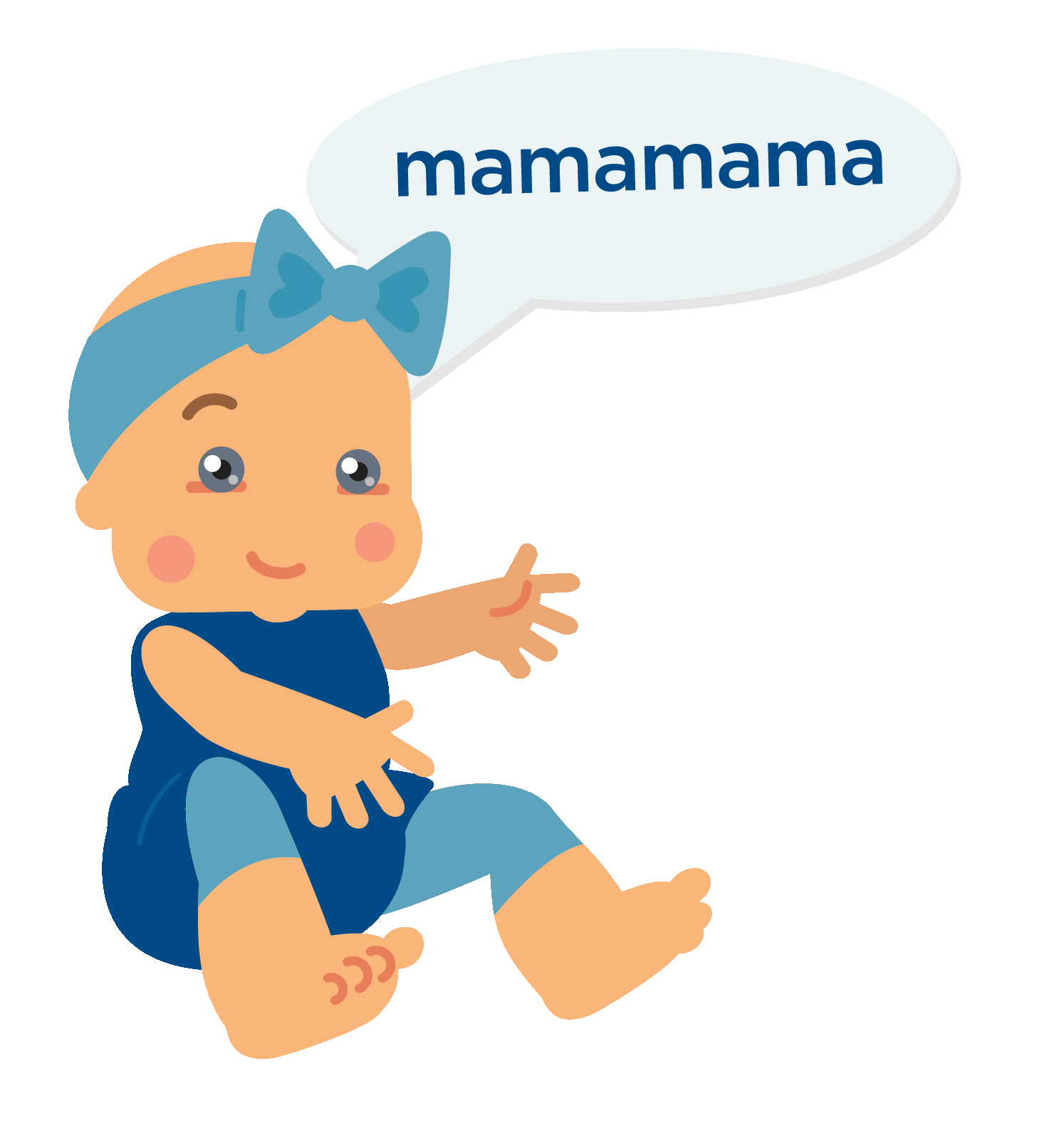
Watch Me Babble!
NEW
(7 to 9 Months)
Listen to your baby’s babbling, such as mamamama or babababa.
Repeat their sounds and add simple words:
- Mamama, Mama is here! or Bababa, Ball!
Pause and wait for your baby to respond, even if it’s just a sound or a small movement.
Repeating your baby’s sounds helps them learn how conversations work and links sounds to words.
Wave Hello!
NEW
(7 to 9 Months)
Wave and say Hello! or Bye-bye! with excitement.
Help your baby wave by gently moving their hand.
Do this often when you greet or say goodbye.
Teaching gestures like waving helps your baby learn social skills and communication.


Point and Play!
NEW
(10 to 12 Months)
Notice when your baby points to something they want.
Say something like,
- I see you want the toy. Let me get the toy for you.
Give them the toy and praise them for trying to communicate.
When you respond to your baby’s pointing, it helps them learn how to communicate.
Sing About My Day!
(10 to 12 Months)
Pick a song you both know, like
- If You’re Happy and You Know It.
Change the words to fit what you’re doing:
Example:
- If you’re washing your hands, scrub-a-dub!
Scrub-a-dub!
If you’re washing your hands, scrub-a-dub!
Scrub-a-dub!
If you’re washing your hands, then the bubbles make you glad!
If you’re washing your hands, scrub-a-dub!
Scrub-a-dub!
Pause sometimes to let your baby make sounds or move their hands.
Singing about everyday activities makes routines fun and helps your baby learn new words.
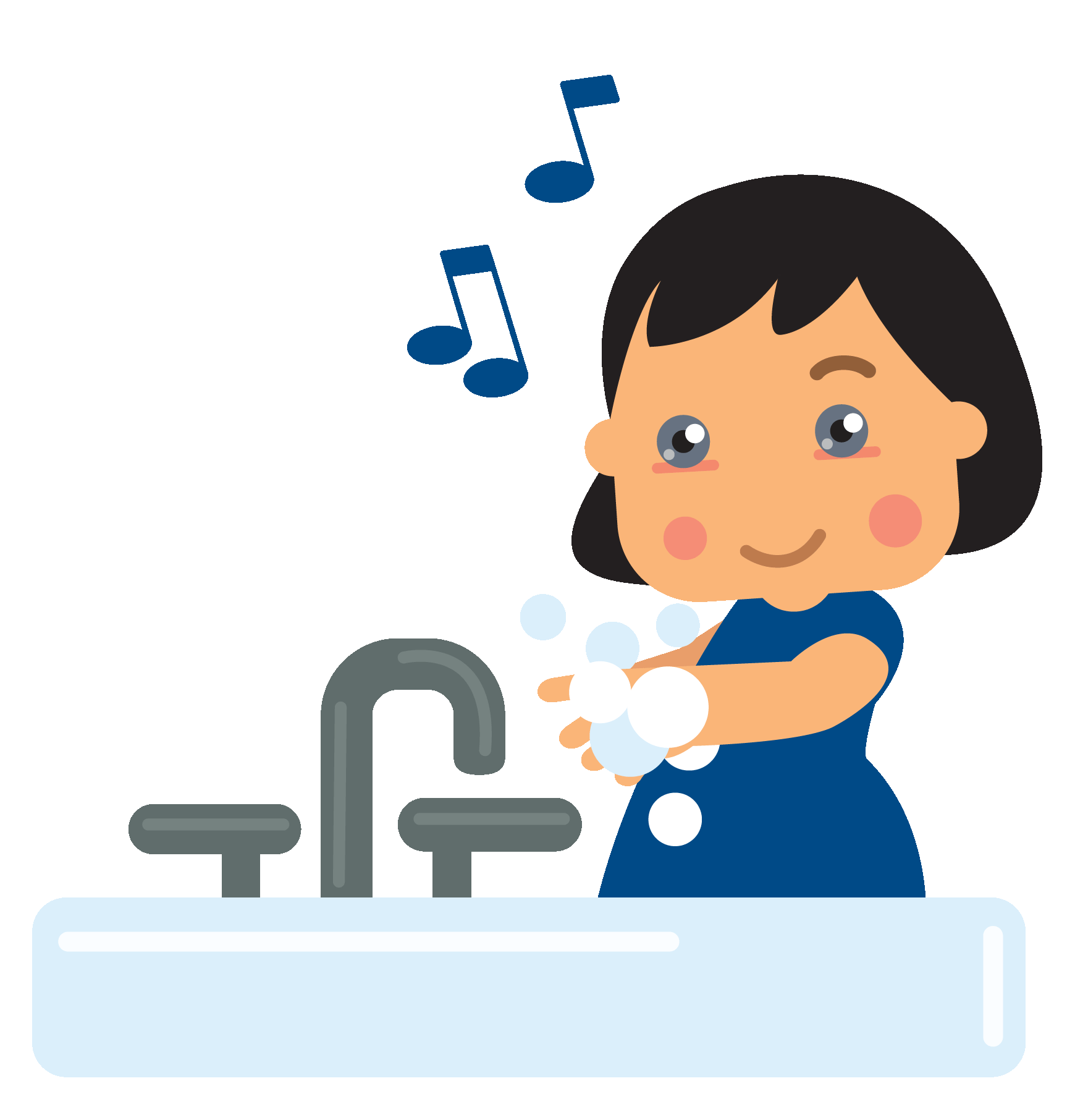
Let’s Keep Talking
Have some fun trying to guess what your baby is saying. When they say,
- Oooh or Gagaga
Respond as if they just told you something very important! Look in their eyes and say,
- That is a very good idea!
- What happened next?
Give them several seconds to respond with a sound or by moving their body or by making a face.
When your baby makes sounds, like, cooing or babbling, or makes a face or body motions, they are experimenting with language. They are talking with you!
One of the best ways to help your baby learn to talk is to talk to and with them – about everything, and all the time.


Animal Sounds
Find a book at the library with big, bright pictures of animals or download these pictures. Show your baby each animal picture. Point to the animal and make the noise that the animal makes. Say,
- What sound does a cow make? Moo. Moo.
See if your baby will copy the sounds you make. In time, they will make the sound on their own when you point to the picture. As your baby grows, they can learn the names of the animals too.
Sing with Me!
Think of a simple song that you remember from your childhood. Sing it to your baby! Then, try making up new words to the tune. For example, sing silly words to “Jingle Bells.”
- Take a bath, take a bath, take a bath my love!
- You can laugh, in the bath, rub-a dub-a dub!
Sing during daily routines like bathing, diapering, and feeding, or hold your baby and sway to the rhythm of the music together.
You don’t have to have a great voice to sing with your baby! Songs will help your baby learn the routines that make them feel secure.


Everyday Reading
Find a book with big, bright pictures. Or download these pictures to your phone or other device. Read the book with your baby or show them the pictures. Point to each picture and say what it is. Help your baby point to the picture, and talk about it. You might say,
- Look, here is a baby! He has big brown eyes.
- Here is a ball! It is a big red ball.
- How high do you think that ball can bounce?
Make reading part of everyday – at bath times, at bed times, in a car, or in a waiting room. Babies love new sights and sounds and will feel connected to you as they explore the world!
Rhyme With Me!
Build your baby’s words by using simple rhymes. They will enjoy the rhythm and lots of expression in your voice. Use rhymes you remember from your childhood or make up short silly rhymes for your baby. For example,
- We have a cat.
- She is very fat.
- She ate a rat.
- Think of that!
Make the rhyme simple so that you can repeat it over and over to your baby. Make it a silly rhyme so that you can laugh together at the funny words.

